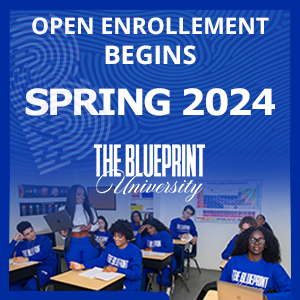Written by Sabrina Terry, NCRC and Stephone Coward, BankBlackUSA
#BlackLivesMatter is more than ensuring the physical safety of Black lives, it is about ensuring equity for Black people across social and economic spectrums. For generations, Black Americans have struggled to have fair and equitable access to financial services. This has thwarted their ability to be economically mobile and has magnified other issues. In addition to public policies, the #BlackLivesMatter movement seeks resources to bridge generational inequities. Yet #BankBlack, a charge to aggregate resources within Black-led financial institutions to build wealth in Black communities, is solely embraced by the Black community rather than a systemic change for equity.
Black financial institutions, such as Black-owned banks and credit unions, struggle to gain and maintain the funds needed to assist Black communities. In the last month, two Black banks merged to create the first Black-controlled lender with $1 billion in assets. In comparison, the top 4 banks have a minimum of $2 trillion in assets. Black financial institutions have substantially smaller assets and are catering to a community with the highest rates of asset poverty. In 2016, the net worth of a typical white family ($171,100) was nearly ten times greater than that of a Black family ($17,150) according to Brookings. Similar to the community itself, and unlike their larger and White-led counterparts, Black financial institutions are struggling to overcome inequitable policies and practices.
Black financial institutions are not supported by the government to the same degree as mainstream banks. In response to the Great Recession, the bank bailout did not meaningfully include Black financial institutions. The community was left to thrive or fail by the ebbs and flows of the economy. In 2001, there were over 45 Black minority depository institutions (MDI) and by the end of 2019 there were 19. As Merhsa Baradan states in The Color of Money: Black Banks and the Racial Wealth Gap, “These institutions were allowed to fail or be dissolved into other institutions.”
While Black financial institutions alone cannot close the racial wealth gap, they are essential to providing resources to the Black community. According to 2013 remarks by Martin Gruenberg, former chair of the FDIC, 67% of their mortgage loans go to African Americans. Whereas, among banks that aren’t Black-owned, fewer than 1% of mortgages go to African Americans. Economic prosperity is an essential element to supporting Black lives as economic injustice is the underpinning of racial injustice in America. Therefore, #BankingBlack cannot just be required of the community itself, but instead be done by the systems that have exploited them.

Mainstream financial institutions have a history of investments that exploited Black lives, such as their roots in the slave trade and funding the U.S prison system. They also targeted Black Americans with subprime products causing even more economic harm. Therefore, mainstream financial institutions have a responsibility to address their role in these injustices and help the Black community become economically mobile. While some banks partially acknowledge their history and launch education or mentoring programs from their foundation, most fail to #BankBlack and integrate equitable practices into their business operations.
Similarly, many municipalities capitalize on Black Americans through over policing and excessive fines. When cities need revenue, they use their police departments to ticket vulnerable populations, particularly racial minorities. Policing tactics that focus on low-level violations (such as jaywalking, littering, disorderly conduct, trespassing or truancy) disproportionately impact low-income Black Americans and often traps them in a cycle of debt. For people who cannot afford to pay for a citation, it creates debt that can impact credit scores. It can also result in the loss of their driver’s license, impacting their ability to travel to work or school, and lead to incarceration. Not only must municipalities move away from fines-based funding models, they must make systemic changes to invest in the communities they’ve extorted.
Both banks and municipalities should #BankBlack to rectify their actions as a part of a larger restitution strategy. Laws, such as the Community Reinvestment Act, already make it beneficial for mainstream financial institutions to #BankBlack. They can receive positive credit when they are evaluated by their regulator for investing in a Minority Depository Institution (MDI). Mainstream financial institutions should house their deposits with Black financial institutions and lend to them directly. Even some fintechs, like Square, have come out in support of MDI’s as a way of advancing racial equity. Ideally, these investments should be more than a one-time transaction. Instead, they should be codified in a multi-year Community Benefits Agreement, have a racial equity focus, and crafted with community leaders to ensure they meet the needs of the community. Institutional support of Black financial institutions is critical to helping African American communities and help families build wealth.
Municipalities should also house their funds, if not a portion, within Black institutions since every city must have their own bank account to store and manage their funds. Although insurance and collateralization can be a barrier for some Black institutions, municipalities can incorporate Black financial institutions by encouraging and permitting innovative strategies, such as multi-institutional pools, in states where less than 100% collateralization is required. Municipal deposits will strengthen Black financial institutions’ balance sheets since government funds are risk averse and position them to do more lending.
Without major institutions who #BankBlack, Blacks will continue to struggle to access equitable financial resources and struggle to obtain wealth-building assets. It is incumbent of every municipal and bank leader, specifically treasurers and chief financial officers, to prioritize Black financial institutions as a mechanism for conducting business and restoring economic opportunity in the communities they’ve profited from. These investments should not replace current financing in Black communities. #BankBlack is essential but institutions must be coupled with robust efforts to increase Black representation in executive and senior level positions, more contracting with Black businesses and a concerted effort to help bridge the racial wealth divide.










